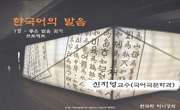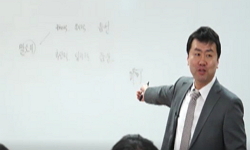The current study analyzes the causes of errors committed by Vietnamese learners who pronounce Korean phonological phenomena, and categorizes their types. In addition, the causes of pronunciation errors are studied through the lens of linguistic inter...
http://chineseinput.net/에서 pinyin(병음)방식으로 중국어를 변환할 수 있습니다.
변환된 중국어를 복사하여 사용하시면 됩니다.
- 中文 을 입력하시려면 zhongwen을 입력하시고 space를누르시면됩니다.
- 北京 을 입력하시려면 beijing을 입력하시고 space를 누르시면 됩니다.
https://www.riss.kr/link?id=T15344557
- 저자
-
발행사항
서울 : 韓國外國語大學校 敎育大學院, 2019
-
학위논문사항
학위논문(석사) -- 韓國外國語大學校 敎育大學院 , 외국어로서의한국어교육전공 , 2019. 8
-
발행연도
2019
-
작성언어
한국어
- 주제어
-
DDC
495.107 판사항(22)
-
발행국(도시)
서울
-
기타서명
A study on the Korean phonological phenomena pronunciation error analysis of Vietnamese learners in Korean
-
형태사항
v, 97 p. : 삽도 ; 26 cm
-
일반주기명
한국외국어대학교 논문은 저작권에 의해 보호받습니다.
지도교수: 허용
참고문헌: p. 89-91 -
UCI식별코드
I804:11059-200000222356
- 소장기관
-
0
상세조회 -
0
다운로드
부가정보
다국어 초록 (Multilingual Abstract)
The current study analyzes the causes of errors committed by Vietnamese learners who pronounce Korean phonological phenomena, and categorizes their types. In addition, the causes of pronunciation errors are studied through the lens of linguistic interference and interlanguage relationship. The objective of the current study is to understand the pattern in which Vietnamese learners acquire Korean by compiling the results of such analysis. The current study is differentiated from previous research which mostly involves experimentation with meaningful vocabulary, as its experimentation vocabulary includes meaningless words that cross morpheme boundaries, which is an attempt to complement that limited reliability of previous studies.
Chapter 2 compares phonological systems of Korean and Vietnamese to predict errors likely to be committed by Vietnamese learners of Korean. In the chapter, the author forecasts that the Vietnamese learners will commit errors in pronouncing the plain-tense-aspirated consonants, as well as diphthongs, in Korea. In addition, the prediction was for errors caused by directly pronouncing written Korean, as well as the final /ㄹ/ (/ɾ/~/l/) sound.
Chapter 3 provides information about the selection and inspection of experimentation vocabulary, as well as the experiment on thirty beginner, intermediate, and advanced Vietnamese learners of Korean.
Chapter 4 provides the results the preliminary survey and those of the experiment conducted using meaningless words developed by the author. The experiment was conducted to test the ten phonological phenomena (lenition, consonant group simplification, nasalization, nasal assimilation, progressive assimilation, regressive assimilation, aspiration, tensification, /ㅎ/(/h/)deletion, /ㄴ/(/n/) addition). The results indicate that the most frequent error committed by Vietnamese learners of Korean Phonological Phenomena Pronunciation Error is ‘lenition > followed by tensification > nasalization > nasal assimilation > regressive assimilation > progressive assimilation > consonant group simplification > /ㅎ/ (/h/) deletion > aspiration.’ Also, the experiment revealed that the causes of errors in pronouncing Korean phonology were complex, combining issues such as interference from the mother tongue, in-language interference, overgeneralization of the target language due to the complicated nature of phonological phenomena, and application of third rules.
Chapter 5 provides a comprehensive conclusion about the results of the above experiment.
the current study will be used to clarify issues regarding the pronunciation instruction for Vietnamese learners of Korean, in addition to establishing a foundation for educating pronunciations of Korean phonological phenomena.
목차 (Table of Contents)
- 1. 서론 1
- 1.1. 연구 목적 1
- 1.2. 선행 연구 3
- 2. 한국어와 베트남어의 음운 체계 대조 7
- 1. 서론 1
- 1.1. 연구 목적 1
- 1.2. 선행 연구 3
- 2. 한국어와 베트남어의 음운 체계 대조 7
- 2.1. 자음 체계 7
- 2.1.1. 한국어 자음 체계 7
- 2.1.2. 베트남어 자음 체계 9
- 2.1.3. 한국어와 베트남어의 자음 체계 대조 10
- 2.2 모음 체계 15
- 2.2.1 한국어의 모음 체계 15
- 2.2.2 베트남어의 모음 체계 17
- 2.2.3. 한국어와 베트남어의 모음 체계 대조 18
- 2.3. 음절 체계 20
- 2.3.1. 한국어의 음절 체계 20
- 2.3.2 베트남어의 음절 체계 21
- 2.3.3. 한국어와 베트남어의 음절 체계 대조 22
- 2.4. 음운 변동 현상 23
- 2.4.1. 한국어의 음운 현상 23
- 2.4.2. 베트남어의 음운 현상 29
- 2.4.3 한국어와 베트남어의 음운 현상 대조 29
- 3. 베트남인 학습자의 한국어 발음 오류 실험 30
- 3.1. 실험 참여자 30
- 3.2. 실험 내용 및 절차 32
- 3.2.1. 실험 어휘 선정 32
- 3.2.2. 실험 절차 및 방법 35
- 4. 한국어 발음 오류 양상 및 분석 37
- 4.1. 설문 조사 37
- 4.2. 음운 변동 오류 분석 44
- 4.2.1. 연음 현상 44
- 4.2.2. 자음군 단순화 48
- 4.2.3. 비음화 / 비음동화 52
- 4.2.4. 역행적 유음화 58
- 4.2.5. 순행적 유음화 62
- 4.2.6. 경음화 67
- 4.2.7. 격음화 70
- 4.2.8. ㅎ 탈락 74
- 4.2.9. 기타 음운 현상 76
- 4.3. 음운 현상 난이도 및 등급별 습득 패턴 분석 79
- 5. 결론 85
- < 참고 문헌 > 89
- < 부 록> 92
- ABSTRACT 96












